The Spirits of Trinidad and Tobago
… was an exhibition of the mind, designed by Gérard A. Besson with the help of Peter “Choko” Tardieu for the House of Angostura in 2002. The display was done in an anthropological way, with exhibits illustrating in a three-dimensional way the world of ideas that was created by the people of the Caribbean. Folklore is a country’s treasure chest of characters that teach and nurture, warn and threaten, delight and astonish. In may ways, folklore is the antibody of a culture. In the folklore of Trinidad and Tobago, southernmost islands of the Caribbean chain, oral traditions mix and mingle to produce a pantheon of characters that are unique to the islands. As the peoples for the Caribbean moved from island to island, they brought with them their folk tales, and some of the characters in this exhibition also exist in the French Antilles and Louisiana. The House of Angostura hosted this exhibition at its “Butterfly Room” in 2002. All photos by Alice Besson.
Papa Bois
Papa Bois is the protector of the forest and its inhabitants against wanton destruction. The exhibit represents a forest scene, showing the tracks of Papa Bois as well as eyes of the trees, mounted on slabs of a felled forest giant, admonishing human beings not to destroy their silvan environment. The cow horn with which Papa Bois warns forest animals of danger formed part of the exhibit along with woodcarvings of forest animals by Shango, photographs of the tree “eyes” from the Brazilian Fundação S.O.S. Mata Atlantica, and a drawing of Papa Bois by Sue-Ann Gomes.
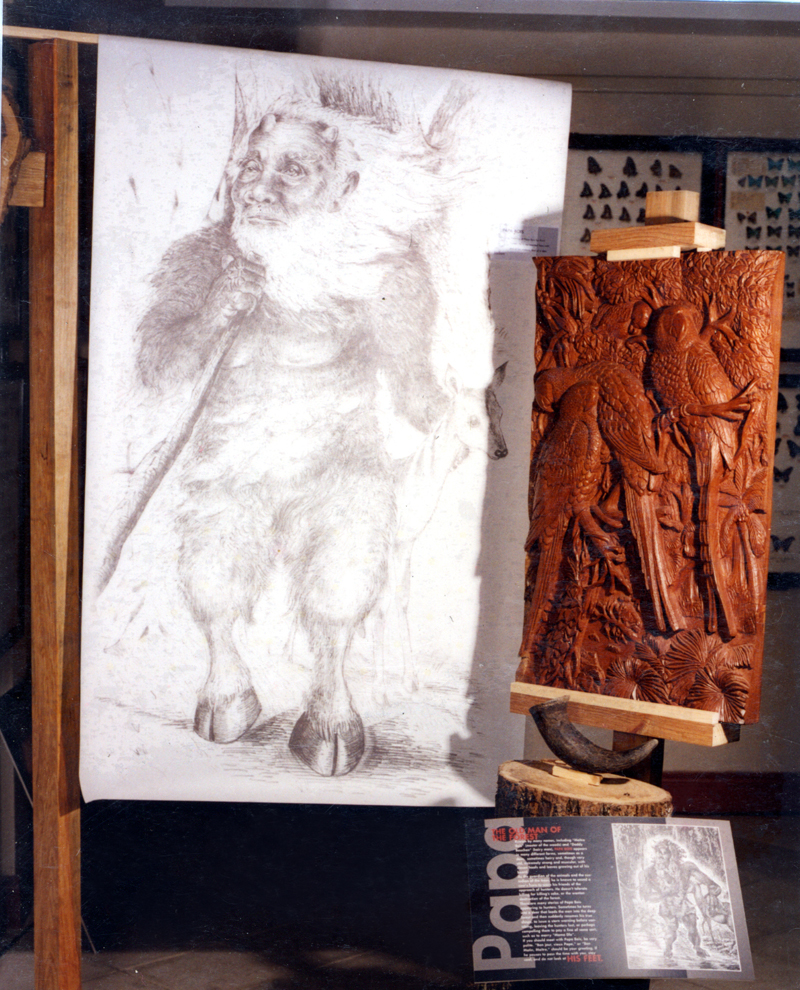




The Soucouyant
The Soucouyant is the old woman who lives alone at the edge of the village, and at night becomes a witch who transforms herself into a vampire-like fireball to suck the blood from her victims. The Soucouyant cult is very much alive in the mountain village of Paramin in Trinidad. The exhibit showed a representation of the bedroom of the Soucouyant, where she is in the process of shedding her wrinkled skin and mutating into a fireball. The back of the Soucouyant display had a mortar and pestle display (the Soucouyant keeps her skin in a mortar while she flies around as a fireball) as well as photographs of Paramin folk by Peter Tardieu. Attributes of the Soucouyant tale, such as the oil of the liver of a fresh corpse, with which she needs to rub herself in order to be able to shed her human skin, and the coarse salt that must be thrown on her skin left behind in the mortar in order to catch her, were on display, along with drawings by Alfred Codallo and Peter Shim (after Michel-Jean Cazabon).



The La Diablesse
The La Diablesse is the spirit of the woman wronged. The exhibit showed a young creole woman regarding herself in a mirror, and seeing her own image in the form of a La Diablesse. The La Diablesse’s attribute—hoofed foot, decomposed countenance, 18th century costume, the chain of slavery around her waist, and a bag full of graveyard dirt, bones and black pennies—give an impression of the apparition that drives men into dementia for generations after a crime against a woman has been committed.



The Duennes
Duennes are the spirits of children who died before they were baptised. The Duenn cult goes back to the cholera epidemics of Trinidad of the mid-19th century, when thousands of new-borns succumbed to the disease. The exhibit showed a crib and “liètte”, the baptismal dress, both unused and empty, leaving the village in fear of a tiny ghost with turned-backwards feet that lures away the living children. Painting by Alfred Codallo. The exhibit also included a semi-circle of custom-hewn stones, representing the rim of a well, the source of the evil of cholera at a time when wells were dug too close to cesspits.

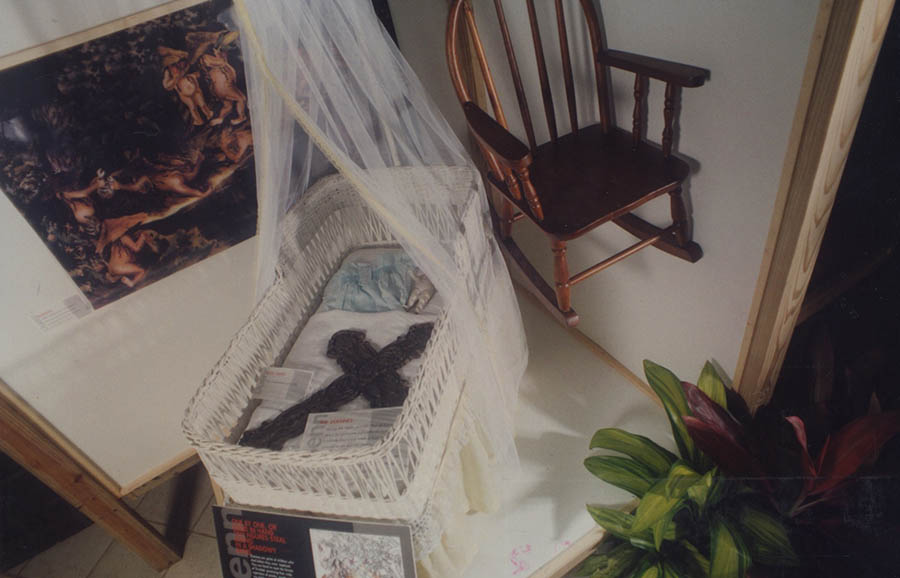
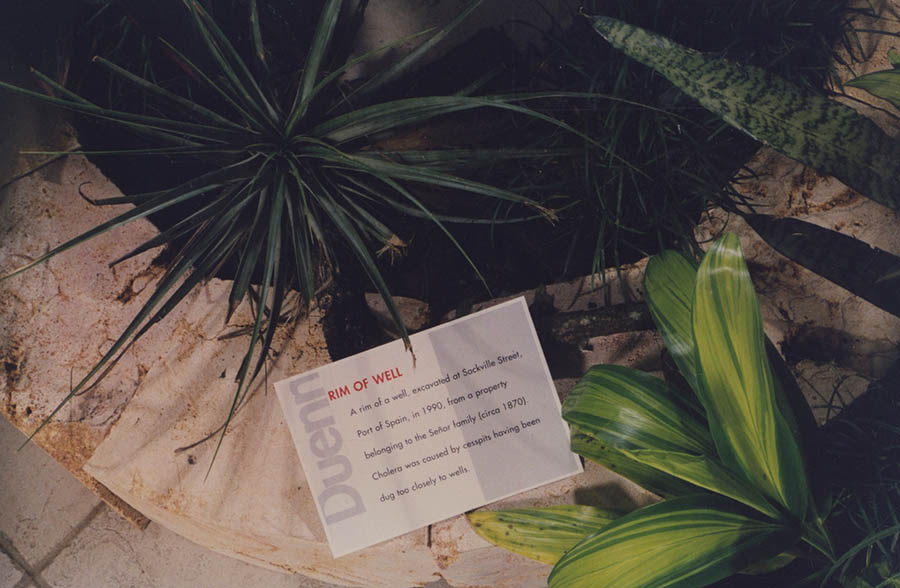
Mama Glo
The sprit of rivers and lakes, Mama Glo or “Maman de l’Eau”, has the body of an anaconda and the face of an African woman. The exhibit showed and old tale that is associated with her, where the young girl finds an enchanted comb in a clear mountain pool and hears a song every time she combs her hair with it. The avatar of Mama Glo is the Mort Bleu butterfly. Woodcarvings by Shango. Drawing by Alfred Codallo.
Tobagonian folklore characters that live in the sea and in secret mountain pools were represented by a montage of seashells and by a pice of a local boat, a Pirogue, as well as by a pair of burnt ladies’ shoes which break the spell of a mermaid.



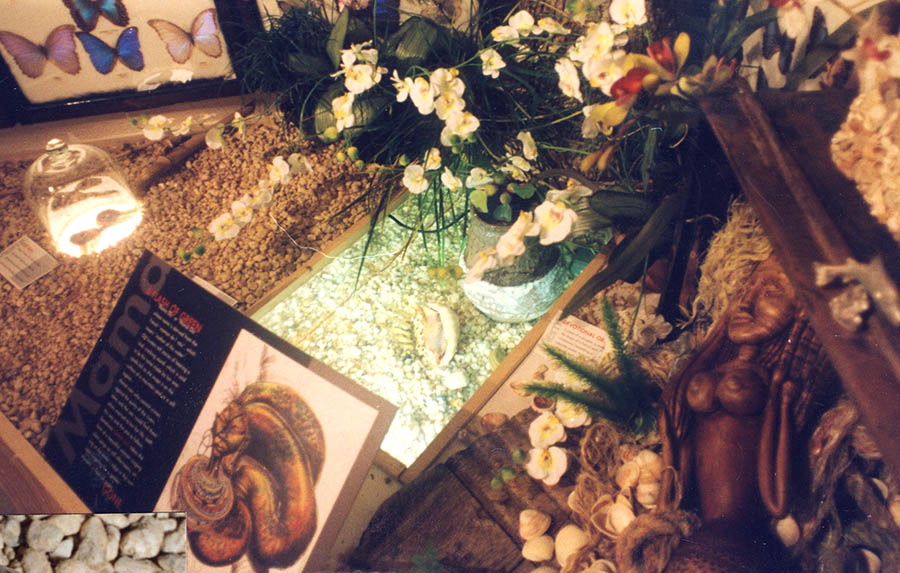
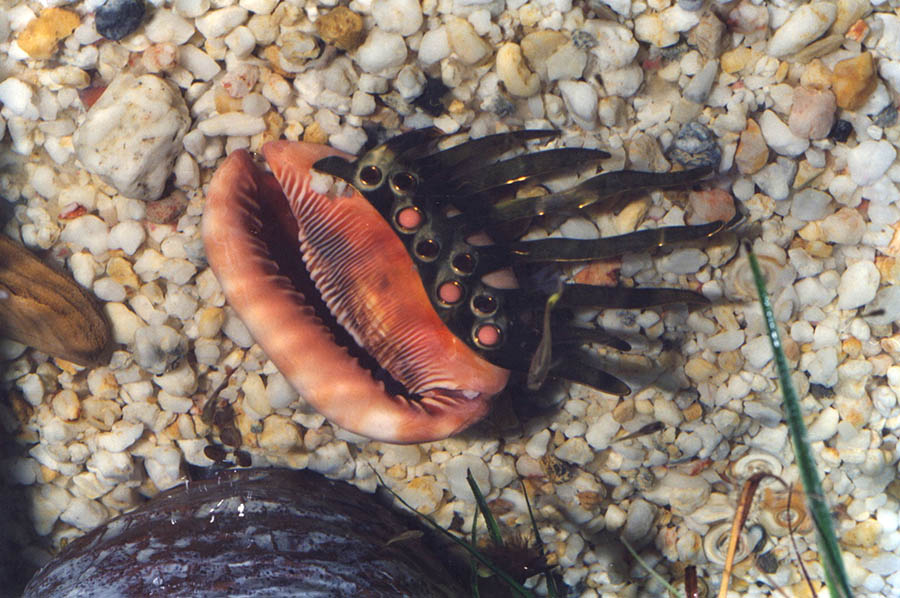
The Ligahoo
The Ligahoo or “Loup Garou” is the shape changer of Caribbean Folklore. Science man, shape changer, obeah man. The Ligahoo exhibit showed the “laboratory” of the man knowledgeable in potions, curses, cures and magic. From the blue bottle to avert the evil eye, to the various ingredients and to magic ball made of feathers, hair and shells, to the bottles with potions and chemicals: the science man is an essential aspect of Caribbean village life. Drawing by Alfred Codallo, Wood carving by Shango.




